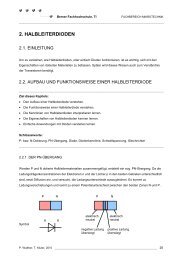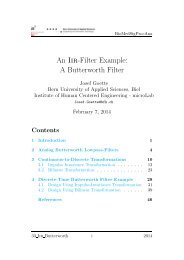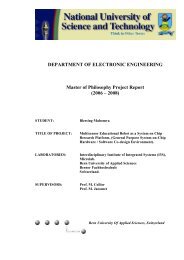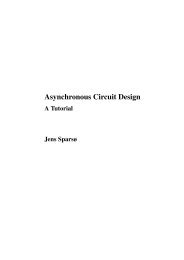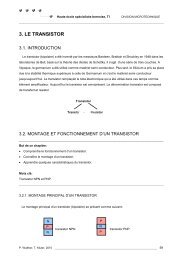Event Detection: Qrs-Complexes in Ecg Signals - microLab
Event Detection: Qrs-Complexes in Ecg Signals - microLab
Event Detection: Qrs-Complexes in Ecg Signals - microLab
- No tags were found...
Create successful ePaper yourself
Turn your PDF publications into a flip-book with our unique Google optimized e-Paper software.
BioMedSigProcAnaThe Algorithm: Pre-Process<strong>in</strong>g• let x[n] ˆ= <strong>in</strong>put to and y[n] ˆ= output from pre-process<strong>in</strong>gstage of algorithm• use for pre-process<strong>in</strong>g a l<strong>in</strong>ear comb<strong>in</strong>ation of first- andsecond derivative• first derivative: approximated as absolute value of threepo<strong>in</strong>tfirst difference∣y 0 [n] = ∣x[n] − x[n − 2] ∣ .• second derivative: approximated as absolute value of threepo<strong>in</strong>tfirst difference of three-po<strong>in</strong>t first differences∣y 1 [n] = ∣x[n] − 2x[n − 2] + x[n − 4] ∣ .• output y[n] of pre-process<strong>in</strong>g stage as l<strong>in</strong>ear comb<strong>in</strong>ationy[n] = 1.3 · y 0 [n] + 1.1 · y 1 [n]To understand the rationals beh<strong>in</strong>d the given approximationof the first derivative, we start with a first-difference operator:δ 1 [n] ˆ= x[n] − x[n − 1] •—• ∆ 1 (z) =(1 − z −1) X(z) .6 <strong>Event</strong>Det 11 2014




